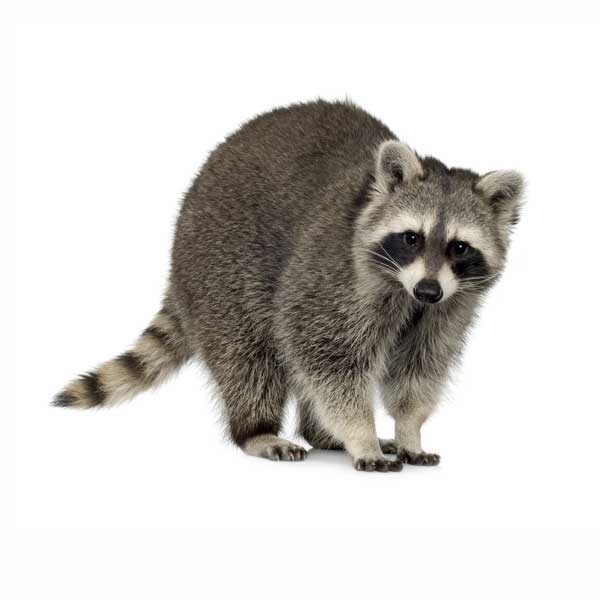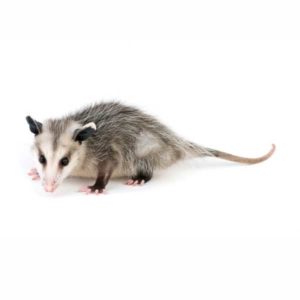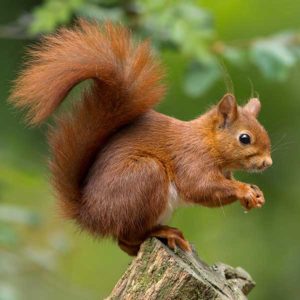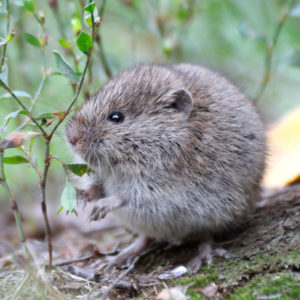The North American raccoon (Procyon lotor) is one of the most recognizable mammals in the region. It is known for its black markings and agile front paws that resemble human hands. These omnivorous animals have adapted well to life in urban areas and can be found in attics, garbage cans, under porches, and their traditional wooded habitat.
Raccoons in Florida
Raccoons are stocky mammals found throughout the United States, and into northern South America. Raccoons are nomadic, but only within a marked territory. They do not dig or make nests but prefer to mark locations, remembering them as available shelters. Raccoons are active year-round but may take cover in dens during periods of severe winter weather. For homeowners, raccoons are notorious ‘backyard bandits’, rummaging through garbage cans, popping kiddie pools, and generally causing mayhem.
What Do Raccoons Look Like?
The northern raccoon has a dense coat of grayish fur, a black mask across its eyes, and a bushy, ringed tail. Adult raccoons typically weigh between 10 and 20 pounds. They walk flat-footed, and their front paws are highly nimble, allowing them to open containers, doors, and latches. Their paw structure is what helps them climb and handle food with ease. Because of their hand-like front paws, raccoons often leave distinctive raccoon tracks, which can be a sign of nearby activity.
Signs of a Raccoon Infestation
Common signs include overturned garbage cans, damage to roof shingles, and scratching sounds in the walls or ceiling. You might also notice torn ductwork, insulation pulled apart, or raccoon latrine sites (areas where droppings and urine are concentrated). Footprints or raccoon tracks around your home or garden are another giveaway. Any of these signs can indicate that raccoons are nesting in your attic or crawlspace. This might be a good time to consider using a wildlife exclusion service to manage the problem.
Habitat, Diet, Life Cycle & Behaviors
While not all raccoons have rabies, they are considered major hosts in the U.S., especially in the eastern part of the country where their populations are increasing. Pets should be properly vaccinated to mitigate this threat. Raccoons will kill poultry, destroy bird nests, and damage gardens or crops. They can destroy insulation, wood, shingles, electrical wiring, and walls as they try to create dens. Droppings, urine stains, or debris build-up from making a nest are other signs of raccoon activity.
Where Do Raccoons Live?
Raccoons prefer wooded areas near water and natural habitats, sleeping in abandoned burrows, and the crooks of trees. In urban settings, raccoons will make their homes in empty crawl spaces, underneath porches, and within attics. Raccoons roam around rural or urban areas, finding food where they can and scouting new locations. They will eat almost anything, including insects, fruit, vegetables, and small animals, if necessary. Raccoons are nocturnal and notorious for raiding garbage cans during the night. Raccoons are attracted to gardens or homes because they provide a ready food source and potential den sites.
Diet
Raccoons are omnivores, meaning they eat both plant and animal matter. Their diet often includes insects, frogs, crayfish, crab, bird eggs, fruit, nuts, and even small rodents species. In urban areas, they scavenge for leftovers, pet food, and scraps from garbage cans. They’re known to be excellent swimmers, which helps them hunt for aquatic prey like crayfish. Raccoons are opportunistic and will eat whatever is readily available in their habitat.
Life Cycle
The mating season for female raccoons usually begins in late winter. After a pregnancy of about 63 days, they give birth to a litter of two to five babies known as kits in spring. Kits are born blind and dependent, staying in the den for several weeks. By the end of summer, they begin foraging with their mother. In the wild, raccoons live up to five years, though those in captivity can live much longer. They may create multiple dens within their territory.
Behaviors
Raccoons are nocturnal, which means they are most active at night. They are curious, intelligent, and known for their problem-solving abilities. Their dexterous front paws allow them to open containers and doors, which can lead to trouble for homeowners. They are also strong climbers, making it easy for them to access rooftops, attics, and trees. Raccoons may become less active in cooler months, but they do not hibernate. Instead, they shelter in dens to avoid cold or severe weather. If you are having an issue with raccoons, it is best to consult a professional wildlife control company for removal.
Are Raccoons Dangerous?
They are known carriers of rabies, leptospirosis, roundworm, and distemper. A rabid raccoon may appear unusually friendly, aggressive, or disoriented. Their droppings can contain roundworm eggs, especially in latrine areas, which can be harmful if passed to pets or humans. If bitten or scratched by a raccoon, seek medical care right away. Keep in mind, raccoons may attack if they feel cornered, especially during the mating season when female raccoons are protecting their young.
How to Get Rid of Raccoons
Trying to handle a rabid raccoon or remove contaminated materials like a latrine on your own can be dangerous. While shop-bought pest repellents or traps might help for a while, they won’t tackle the root cause. If you’re dealing with raccoons in your attic, crawlspace, or around your yard, it’s best to call in wildlife control professionals. They can locate dens, safely remove the animal, and seal entry points to help prevent return visits.
Raccoon Prevention Tips
To help protect your property, secure garbage cans with tight-fitting lids and store pet food indoors. Close off openings to attics, crawlspaces, and sheds. Trim back tree branches that give raccoons access to your roof. Since raccoons are drawn to easy food sources and shelter, removing the bait is key to prevention. Always clean up fallen fruit, bird seed, and any leftovers from outdoor meals to avoid drawing in unwanted guests. If the problem persists, wildlife trapping is a humane removal solution but requires professional handling.
Need Help with Nuisance Wildlife? We Can Help!
If raccoons are damaging your home during nightly forays, Florida Pest Control can help. Our trained technicians understand raccoon behavior and know how to locate and address infestations in rural and urban areas. We use proven methods to help remove raccoons and discourage them from returning. Our pest control experts live in the surrounding area and are familiar with the wildlife challenges in Florida.
Need a Pest Control Estimate?
Get a FREE quoteFrequently Asked Questions
Do Raccoons Hibernate?
Raccoons do not hibernate. However, they may become less active during extreme cold, sheltering in dens for days at a time because they are nocturnal. They will still emerge to feed when temperatures rise.
Are Raccoons Nocturnal?
Yes, raccoons are strictly nocturnal. Most of their activity, including foraging for insects, bird eggs, and pet food, happens at night. Their night vision and stealth movement make them well-suited for this lifestyle.
Are Raccoons Rodents?
Raccoons are not rodents. They belong to the order Mammalia and the family Procyonidae, which makes them relatives of the ringtail and other members of the genus Procyon. Their size and paw structure often lead to their confusion with rodents.
Do Raccoons Have Rabies?
Not all raccoons have rabies, but they are considered one of the top carriers in the U.S. A rabid raccoon might act tame or aggressive, showing odd behavior. Avoid handling any sick or disoriented raccoons, and contact a professional wildlife control service.





